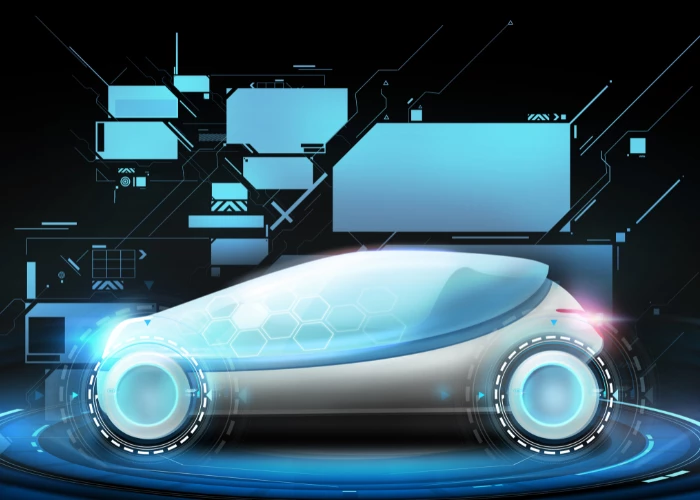Uber's incident and crucial brake-by-wire systems for autonomous vehicles
Add bookmarkThe recent news that an Uber self-driving test car caused a fatal traffic accident in Tempe, Arizona has once again thrown a spotlight on the safety of autonomous vehicles. The vehicle was in self-driving mode, with a human at the wheel, when it struck a pedestrian as she crossed the street.
Uber has suspended all self-driving car test across North American cities in light of the accident. Anthony Foxx, who served as US Secretary of Transportation under President Obama, said it was a “wake up call to the entire industry and government to put a high priority on safety”.
These tragic circumstances serve to highlight one of the critical issues with autonomous driving. On average, 100 people die every day in road traffic accidents in the United States and while self-driving cars promise the potential to reduce this figure significantly, the general public remains particularly skeptical about ceding control of vehicles to computers. Recent surveys by the Pew Research Centre show that over half (56%) of the American public would be worried about riding in an autonomous car, with concerns over safety and lack of control listed as the main reasons. While those involved in the development of autonomous technology are well aware of the benefits, it is essential for the industry to take a pragmatic and structured approach to implementation to avoid mass rejection or a public backlash against self-driving vehicles. Single incidents such as the Uber crash can create overwhelmingly negative press and therefore safety has to be paramount in the development of autonomous cars.
Braking Requirements
Clearly, central controls such as braking and steering are of the utmost importance in a self-driving vehicle. Electrification and the introduction of brake-by-wire technologies are also changing the landscape for brake systems, and innovations in the field will need to achieve remarkable levels of functional safety and redundancy.
The Society of Automotive Engineers (SAE), in light of these trends, has recently updated its Main Brake System Requirements to be followed by OEMs and Tier 1 suppliers. These include:
- Priority 1: Vehicle Deceleration: In any failure mode, appropriate deceleration must be achieved. The basic rule being that the higher the autonomous vehicle manoeuvre speed, the higher the deceleration in degraded mode should be.
- Priority 2: Vehicle Stability: During braking manoeuvre in any first failure mode, the locking of the rear wheels must be avoided.
- Priority 3: Vehicle Steerability: During braking manoeuvre in any first failure mode, the locking of the front wheels must be avoided.
- Priority 4: Secure Standstill: A vehicle that has been brought to a standstill in any first failure mode must be secured independently in that standstill for an infinite time period - typically solved with an independent actuator park brake or gear lock.
OEMs and Tier 1 suppliers are beginning to produce such technologies which will be crucial to the development of fully autonomous vehicles.
NVIDIA
At CES 2018 NVIDIA revealed the first samples of its DRIVE Xavier SoC processors. The complex system-on-chip processor is the world’s most powerful autonomous machine processor, featuring 9 billion transistors and representing $2 million in research and development.
NVIDIA plans to enable level 4 autonomy with the Xavier SoC, which offers 30 trillion operations per second and is a key part of the NVIDIA DRIVE Pegasus AI computing platform. The new system, codenamed Pegasus and unveiled in late 2017, extends the NVIDIA DRIVE PX platform to handle level 5 autonomous vehicles. The platform is powered by four high-performance AI processors, coupling two Xavier SoC processors and two next-generation discrete GPUs with hardware created for accelerating deep learning and computer vision algorithms. The system is intended to provide the enormous computational capability for fully autonomous driving in a computer the size of a license plate, thus reducing energy consumption and cost.
Bosch
At the 2018 North American International Auto Show (NAIAS), Bosch showcased its latest redundant braking system for autonomous vehicles to support all levels of automation as defined by SAE.
Bosch’s solution for a fail-degrading brake system is the combination of its electromechanical brake booster, iBooster, and ESC (Electronic Stability Control) or ESP (Electronic Stability Program) systems. Both are independently capable of performing vehicle braking functions in the event of a failure. For SAE levels 4 and 5, redundancy becomes all the more important as the time frame without the driver in the loop increases.
The Bosch system, which was named a finalist for the Automotive News PACE (Premier Automotive Suppliers’ Contributions to Excellence) Award, replaces a vacuum brake booster with the intelligent iBooster. Thus the redundant braking system is comprised of two actuators, each of which is able to decelerate the vehicle independent of the driver applying the brake pedal. Even if a failure occurs in the braking system, either actuator is able to avoid wheel lock-up by modulating the brake pressure so that the vehicle can still be steered during deceleration.
General Motors
2017 saw crucial developments for several OEMs in the autonomous space. GM acquired technology company Cruise in 2016, and by September 2017 they had unveiled the 3rd generation of Chevrolet Bolt EV autonomous prototypes. The aim of the subsidiary is to develop the necessary systems for levels 4 and 5 autonomous driving which can be integrated into mass-volume production.
Building on the previous generations, the 3rd generation cars have almost completely new and fault-tolerant electrical, communication, and actuation systems designed to provide the necessary redundancy systems for driverless vehicles. GM had already developed partial solutions with the level 2 SuperCruise system which debuted on the Cadillac CT6. SuperCruise was delayed for a year due to safety concerns, and one of the changes made was to add an active rear-wheel system. Here, if the front steering assist fails, the rear system can take over and guide the vehicle until the driver takes over.
The 3rd generation design, according to Cruise, features some 4,085 wires and 1,066 connectors - highlighting the need for close collaboration with OEMs in order to achieve mass-volume with a low defect rate and high reliability.
Ford
In a similar move, Ford announced an investment of $1 billion over five years in AI startup Ago.ai in 2017. Formed by former Google and Uber leaders, Argo will engage roboticists and engineers from inside and outside Ford to develop a new software platform for Ford's fully autonomous vehicle, slated for 2021.
The partnership, intended for Ford’s level 4 autonomous cars, will see the OEM continue to develop its purpose-built autonomous vehicle hardware platform, as well as systems integration, manufacturing, interior and exterior design, and regulatory policy management. Argo will join forces with Ford’s autonomous vehicle software development effort to strengthen the commercialization of self-driving cars.
The OEM states that ‘Argo AI’s agility and Ford’s scale uniquely combine the benefits of a technology startup with the experience and discipline of the automaker’s industry-leading autonomous vehicle development program’.
Summary
Redundant safety systems remain a key barrier to fully autonomous vehicles, and in the light of the recent Uber accident, the spotlight is on both manufacturers and government legislators in terms of the safety of testing on public roads.
The SAE guidelines are invaluable to engineers and designers as they continue to develop more sophisticated systems which can safely operate critical functions such as brakes and steering - even in the event of system failure.
The demonstration of robust fail-safe systems will be crucial to the acceptance of increasing levels of automation on the road to fully autonomous cars over the course of the next decade.
Sources:
- https://iq.intel.com/functional-safety-will-protect-passengers-in-autonomous-cars/
- http://articles.sae.org/15703/
- http://www.ingentaconnect.com/contentone/ist/ei/2017/00002017/00000019/art00007?crawler=true&mimetype=application/pdf
- https://blogs.nvidia.com/blog/2018/01/25/whats-difference-level-2-level-5-autonomy/
- https://nvidianews.nvidia.com/news/nvidia-announces-world-s-first-ai-computer-to-make-robotaxis-a-reality
- https://www.sae.org/news/2018/03/soft-tests-for-autonomous-vehicles
- http://www.bosch-presse.de/pressportal/de/en/bosch-technology-enables-redundancy-needed-for-automated-driving-140487.html
- https://www.gm.com/content/dam/gm/en_us/english/selfdriving/gmsafetyreport.pdf
- https://www.conti-engineering.com/CMSPages/GetFile.aspx?guid=dd9854b4-96b6-45bb-bc0d-a3ffadc751c8
- http://www.bbc.co.uk/news/business-43459156





















